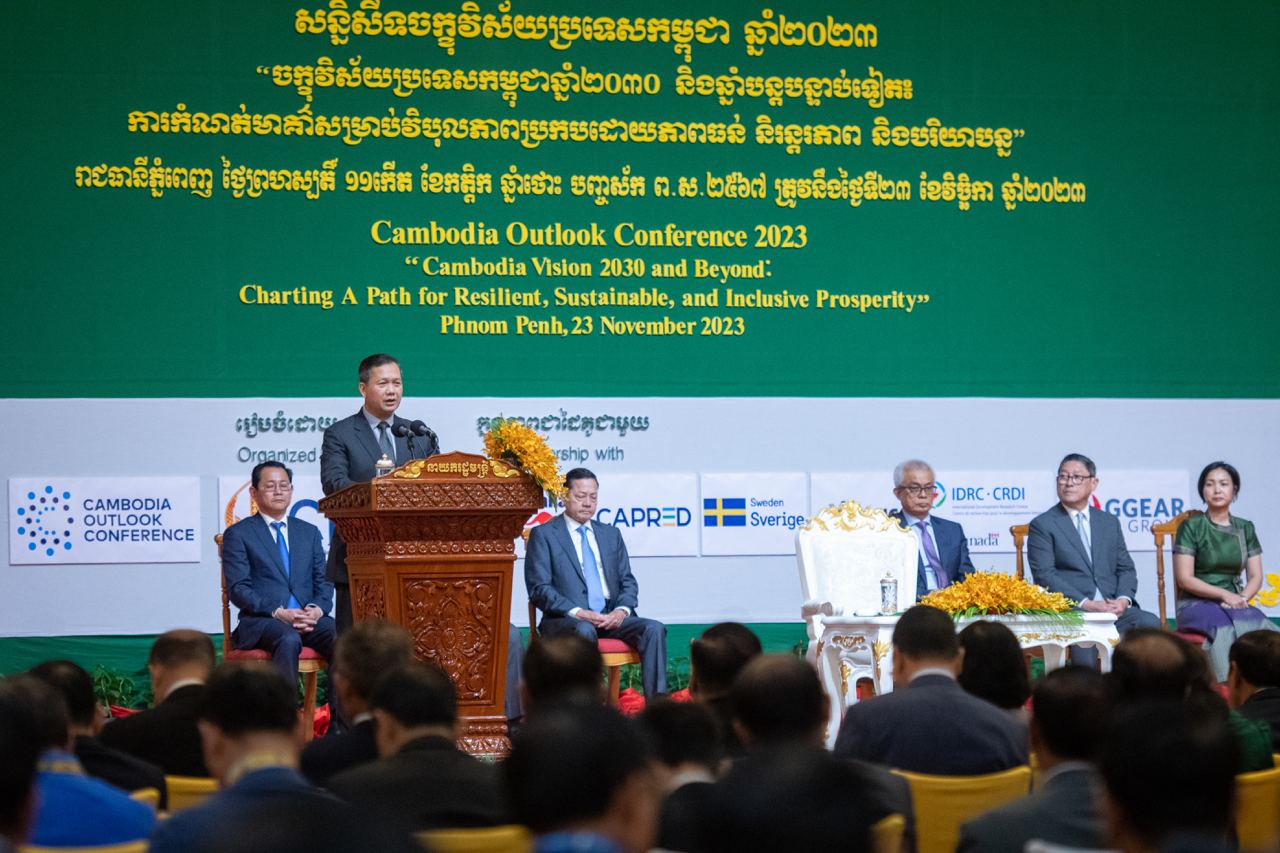Cambodia Investment Review
The recent 15th Annual Cambodia Outlook Conference, held on November 23, 2023, brought together 500 influential decision-makers, including Prime Minister Hun Manet. The conference delved into the challenges and opportunities outlined in the ongoing research study, “Cambodia Vision 2030: An Assessment of Cambodia’s Upper middle-income Target for Resilient, Inclusive, and Sustainable Growth,” conducted by the Cambodian Development Research Institute (CDRI).
Prior to the pandemic, Cambodia experienced robust economic growth driven by a horizontal shift from agriculture to industry and services. However, experts now emphasize the need for a vertical shift—moving up the value chain within all sectors—to sustain growth. Manufacturing, a key sector, requires greater participation in global supply chains, a goal that Cambodia has initiated but needs to intensify.
Speaking at the conference, Prime Minister Hun Manet underscored the importance of continued reform and proactivity in building resilience and promoting economic diversification. The challenges, however, are formidable, as geopolitical uncertainties and a volatile economic climate pose significant hurdles.
Key Reform Priorities Unveiled
The Outlook Conference yielded seven critical reform priorities, forming the basis of the government’s Pentagonal Strategy and the path to realizing Cambodia’s 2030 Vision.
- Reversing Economic Scarring from the Pandemic:
- Implementing short-term priorities, including remedial programs to address students’ learning loss.
- Building social protection programs to alleviate poverty.
- Attracting more manufacturing foreign direct investment (FDI) through immediate competitiveness reforms.
- Promoting Inclusive and Accountable Institutions:
- Building capacity in institutions for effective policy formulation and evaluation.
- Improving data management systems to measure distributional impacts.
- Promoting e-services and digitizing government-to-citizen programs for a smarter and more efficient government.
- Strengthening and Expanding the Social Protection System:
- Expanding the reach and support of the Social Protection System.
- Mobilizing higher tax revenue to broaden the tax base and support lower-income households.
- Sustainable Investment in Natural Resources:
- Balancing environmental sustainability with economic growth.
- Transitioning to clean and renewable energy while considering the role of rural households, especially women.
- Expanding, Upgrading, and Diversifying the Manufacturing Sector:
- Improving the business regulatory environment and reducing costs.
- Addressing modern challenges, including environmental and labor standards.
- Modernizing the Agricultural Sector:
- Supporting agri-processing for the manufacturing industry.
- Addressing environmental stress and degradation, and climate change impacts.
- Investing in Education, Skills Building, and Digital Infrastructure:
- Prioritizing quality education from early childhood to high school.
- Urgently improving the quality of K-12 education.
- Enhancing digitalization to bridge the gap between low-income and wealthy households.
Path Forward: Building Inclusive and Sustainable Growth
The consensus among conference participants is that achieving the 2030 Vision requires more than just economic growth. Cambodia must prioritize inclusive, sustainable, and resilient growth, addressing discrimination and ensuring the foundations for progress toward becoming a high-income country by 2050 are laid today.
As Cambodia navigates these challenges, the government’s commitment to continued reform, proactivity, and addressing the underlying constraints for long-term growth will be crucial in realizing its ambitious Vision.





